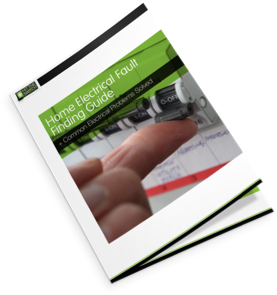Call 1300 205 205
Latest News
Talk to us at a time that suits you
Save the hassle and let us call you to book in a quote.
Talk to us at a time that suits you
Save the hassle and let us call you to book in a quote.

Sustainable Building: An Unrivalled Guide to Greening Your Home
Sustainability has become the new buzzword. For good reason. As we become more aware of our impact on our local environments and resources, we become more and more interested in how to live sustainably. Here at Hit The Switch, we get plenty of questions about how we can build our homes more sustainably. We Aussies […]

 Sustainability has become the new buzzword. For good reason. As we become more aware of our impact on our local environments and resources, we become more and more interested in how to live sustainably.
Sustainability has become the new buzzword. For good reason. As we become more aware of our impact on our local environments and resources, we become more and more interested in how to live sustainably.
Here at Hit The Switch, we get plenty of questions about how we can build our homes more sustainably.
We Aussies spend on average 90% or more of our time indoors. That stat has made us think about how we can build our homes in a more sustainable way, not just for the environment but for our own health.
Sustainable building is a way of building homes that is affordable but doesn’t negatively impact on the environment or the occupant’s health. It covers every aspect of building from design through to construction.
Sustainable building, more often called green building, calls us to look at everything from how we design our homes to the types of materials we use. It makes us think about how we can be more energy efficient. More water efficient. How we can change our habits to be more sustainable.
In this guide, we’re going to explore all that and more. Join us on an investigation into sustainable building. Click on a section below and let’s get started.
- What Is Green Building?
- Why Is It Important?
- Epic Examples of Sustainable Building
- How to Build a Sustainable Home
- Passive Design
- Sustainable Materials
- How to Be Energy Efficient
- How to Be Water Efficient
- The Best Resources for Sustainable Building
What Is Green Building?
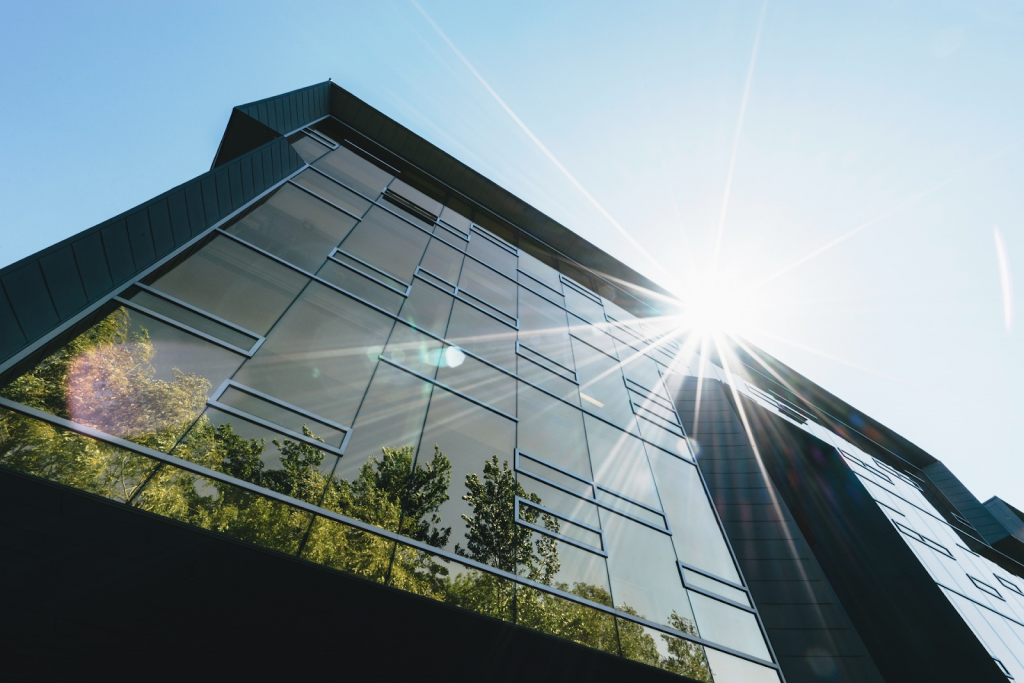
Green building includes principles of sustainable development. Green building considers the health of the environment and of the future occupants in every aspect of building. Design. Construction. Ongoing occupation. You name it.
As the Green Building Council Australia sums it up: green building means “meeting the needs of the present without compromising the future”.
In short, green building prioritises harmony with the local climate and environment, energy and resource conservation, and natural materials.
The World Green Building Council says a building might be considered sustainable when it:
- Uses energy, water, and other resources efficiently.
- Harnesses renewable energy (such as with solar panels).
- Takes measures to reduce pollution and waste, such as through reuse and recycling.
- Provides good environmental air quality.
- Uses non-toxic, ethical, and sustainable building materials.
Why Is Sustainable Building Important?
Green building has become largely standardised in Australia and across the world now thanks to a growing awareness of the need to live in harmony with our environment.
"Green Star certified buildings in Australia produce 62% fewer greenhouse gas emissions than the average Aussie building, and 51% less potable water than if they’d been built to meet minimum industry requirements. - World Green Building Council."
Green building benefits not just the environment by minimising our carbon footprint and environmental impact. It also has social and economic advantages.
Environmental Benefits
- Conserve our natural resources
- Conserve water
- Reduce emissions
- Protect the local ecosystem
- Reduce waste
- Improve air & water quality
Economic Benefits
- Reduce home operating costs
- Increase property value
- Optimise the building’s life cycle
Social Benefits
- Improve occupant health
- Minimise strain on local infrastructure
- Improve occupant productivity & morale
Epic Examples of Sustainable Buildings
A range of sustainable buildings already exist in the world, from our hometown Melbourne to China, Europe, and the States. Here are just a few of our faves.
Council House 2, Melbourne

Australia’s first Six Star Green Star building, Council House 2 (or CH2) was completed in 2006 with non-toxic building materials, high quality ventilation, and savings of up to 80% in energy consumption and 70% in water usage.
The City of Melbourne takes you on a virtual tour of the building and tells you everything about its green design.
105 Phillip St, Parramatta

Parramatta’s first Six Star Green Star building was 105 Phillip St, which houses the NSW Department of Education. During demolition and construction of the site, over 97% of the materials were recycled.
The building uses rainwater to cool the towers, safe building materials, and an ultra-efficient LED lighting layout. The roof terrace contains a BBQ social area and a soccer court. Yes, you read that right. We want one too.
One Angel Square, Manchester, UK

The headquarters of the Co-operative Group is powered by a pure plant oil-fed Combined Heat and Power (CHP) system using rapeseed from The Co-operative’s own farmland. Excess energy is returned to the grid. LED lighting and a recycled waste and rainwater system are also notable features.
Shanghai Tower, Shanghai, China

The world’s second-tallest building proves that size doesn’t deter sustainable building. This 632m giant features wind turbines to power its outer lighting.
Natural light floods into the building thanks to transparent inner and outer “skins”, which reduce the need for artificial lighting. And everything from ventilation to heating and cooling is monitored with smart controls. These features help reduce the tower’s carbon footprint by a mammoth 34,000 tons annually.
Sun-Moon Mansion, Dezhou, China
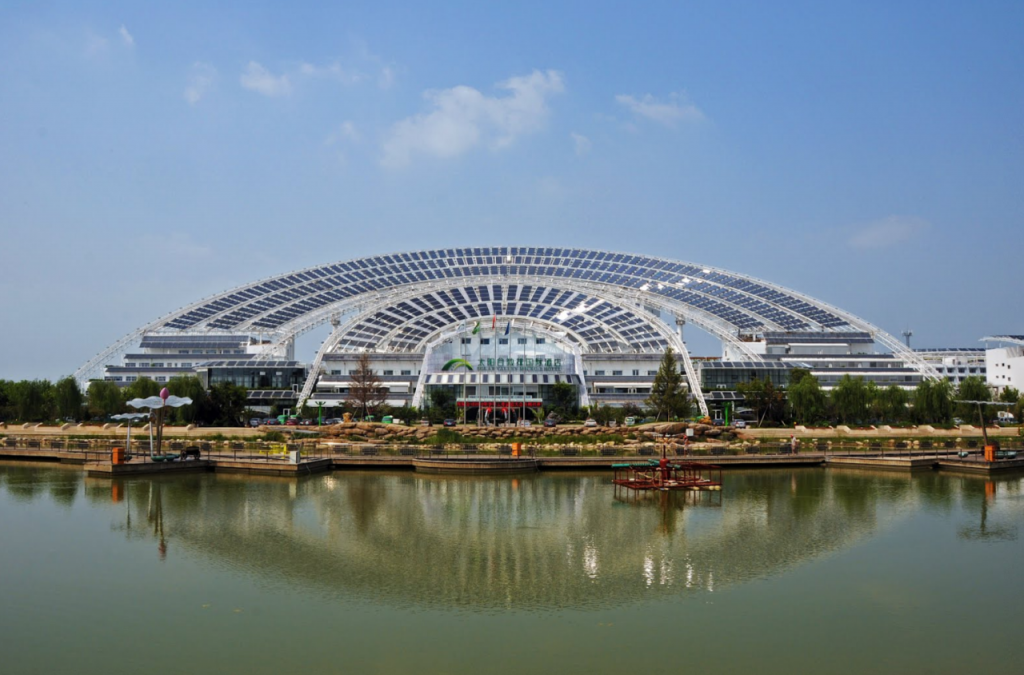
This 75,000 square metre mansion is one of the world’s biggest solar-powered structures, with a solar-powered hot water system, 4,500 square metres of solar panels, and energy-saving windows.
Manitoba Hydro Place, Winnipeg, Canada

This building embraces passive design, natural ventilation, geothermal heating and cooling, triple-glazed windows, and roof gardens. That makes it one of North America’s most energy efficient buildings.
For more inspiration, check out the following incredible resources:
- The City of Melbourne gives a list of some of Melbourne’s best green buildings.
- The Eco Warrior Princess shares 5 more examples of innovative sustainable buildings around the world.
- 1 Million Women provides an encouraging list of Australia’s most sustainable buildings.
How to Build a Sustainable Home
Any new Australian home has to comply with a range of energy-efficiency requirements as part of the Building Code of Australia. This means new homes need to hit an average energy star rating (out of 10) for their design before approval. In Victoria, new homes must hit a minimum 6-star rating.
Passive Design: What You Need to Know

A large part of sustainable building is passive design, which uses the local climate to moderate temperatures in the home.
By using passive design, your home is effectively getting a mean level of thermal comfort, without excessive heating or cooling. That cuts out about 40% of the average home energy use. Lower CO2 emissions, lower energy bills.
Passive design harnesses the sun, shade, and cool breezes to regulate your home temperature. It may incorporate:
- Shading
- Passive solar heating
- Passive cooling
- Weather sealing
- Insulation
- Thermal mass
- Glazing
- Skylights
And it’s all in how your home is oriented on the block. For example, in most cases, you’ll want to make your home north-facing to get maximum sun exposure.
Because of this, you need to consider passive design right at the start of the building process, in the design stage.
But there’s no standard passive home design; it depends on where you live in Australia. In fact, there are eight main climate zones across the continent. Each of them will have different requirements to help you get perfect thermal comfort.
The Nationwide House Energy Rating Scheme’s Climate Index Map will help you figure out which design suits your climate.
And this Modscape article goes more in depth about how to create a sustainable home using a passive design.
Sustainable Materials

Hold on. Did you think sustainable building only refers to energy and water usage? No. Green building also involves using the best and safest materials in the most efficient way. And with little waste.
Pretty much every building material has an environmental cost, depending on how it’s made or sourced. But sustainable materials don’t have as bad an impact on non-renewable resources, the environment, and human health.
Using sustainable materials begins with recycling or reusing. Reusing materials in an existing home rather than bulldozing it. Building smaller homes. Using modular elements. Avoiding unnecessary touches. Anything to avoid excessive waste.
The next step is in sourcing durable, low maintenance, and environmentally-friendly materials that will extend your building’s life cycle.
The best green materials are:
- Durable
- Have a low environmental impact across their life cycle
- Help improve thermal performance
- Have been or can be reused or recycled
- Are locally available.
Finally, sustainable building materials also account for the health and safety of the home’s occupants. Up to 374 asthmagens can be found in most existing building materials and the chemicals in those same materials can drastically affect your indoor air quality. Green materials combat this.
But how do you know which materials are sustainable and which to avoid? Here, it gets tricky. You need many different materials for your home’s walls, roof, floors, and more.
So instead of going through each nitty-gritty option, we recommend you jump on over to one of these quality resources to help guide your choices:
- The Australian Government’s Your Home website gives a detailed overview of the materials needed in your home and their environmental cost.
- The BREEAM Green Guide to Specification provides information on the environmental impacts of building materials commonly used in homes.
- Ecospecifier is an eco-product selection database that doles out info on the sustainability credentials of everything from refrigerators to clay-based bricks.
Also look out for materials certified by:
Energy Efficiency in Sustainable Building

Unsurprisingly, a huge part of sustainable living involves finding innovative ways to reduce your energy consumption. Australian households are responsible for around 12% of the country’s greenhouse gas emissions and indirectly contribute to further emissions through electricity consumption.
Creating sustainable living in the home starts with your heating, ventilation, air conditioning, and hot water systems. They emit the most greenhouse gases.
The perfect way to start is by adapting your home for energy efficiency. Sustainable building means finding ways to manage demand, maintain a steady power supply, and embrace renewable energy.
Solar Power Is the Way Forward
We can’t talk about sustainable living and building without mentioning renewable energy. Solar power is at the top of the list.
"15% of Australian households have solar systems installed on their rooftops. "
Solar panels can be mounted on your roof or as a freestanding installation (although this is uncommon) and reduce your dependency on the grid. The average cost of producing electricity from solar modules over their lifetime is equal to the cost of buying electricity from the grid. So it’s a win-win.
Your solar panels are only going to be as effective as the site, orientation, size, and tilt angle of your panels. This is why it’s important to have an accredited specialist design and install your setup.
Solar panels draw energy from the sun into your home. Batteries store excess energy you can access when it’s cloudy or night time. Having a battery means you can operate free of the grid.
But setup is complex. You need:
- Solar panels
- A battery bank
- An inverter (which turns energy from DC to AC mains power)
- A battery charger
- A fuel-generator for back-up supply (optional).
Install a Smart Meter
A smart meter transmits data to your home and helps you understand your energy consumption habits.
From your phone or laptop, you can access information on real-time energy use and costs, which helps you cut down on usage and save money.
Heating and Cooling
About 40% of your household’s energy use comes from heating and cooling. So it’s the first thing you need to tackle in a sustainable design.
If your home embraces a passive design, you can eliminate much of the need for energy-powered heating and cooling systems. Wall and roof insulation. Window shading. Roof vents. All improve your home’s energy efficiency.
In particular, windows can be responsible for some 25% of your home’s heat gain and loss, so it’s important to invest in double-glazed windows. These windows are designed to inhibit the flow of heat and have tightly-sealed frames to prevent any heat loss or gain.
Of course, some buildings may still need a little additional help from a heating or cooling system. And that’s fine. In this case, simply look out for energy-efficient solutions.
Gas heaters and energy-efficient reverse cycle air conditioners are your best options, producing a third of the emissions of your typical electric heater.
Fans and evaporative coolers are your best cooling options. But note that evaporative coolers only work in dry climates.
Water heating
Your next biggest energy user in the house is your water heater, which accounts for some 21% of the energy used in your home. The best ways to combat this are to reduce your need for hot water and resort to renewable energy sources to heat your water.
Shorter showers. Fewer baths. Wash your clothes on cold. Do your washing up in one hit. Reducing your need for hot water is easy.
As for an energy efficient hot water system; solar, electric heat pump, and gas hot water system can reduce greenhouse gas emissions for hot water by 80%.
Lighting and Appliances
Lighting up your home consumes 8% to 15% of your home’s electricity budget, although it varies greatly depending on the type of lighting system you use, along with your habits.
LED lighting is a fantastic sustainable lighting option that helps you reduce your energy bills and improve the look of your home.
Contact Hit The Switch to learn more about LED lighting installations today.
A home lit naturally by the clever use of daylight is your best option. This involves the strategic placement of windows and eaves throughout the home during the design and construction process.
Meanwhile, your appliances comprise about a third of your household energy use, with the fridge/freezer combo and the television consuming the most electricity.
When shopping for whitegoods, refer to the Energy Rating Label and Water Efficiency Label for the most sustainable appliances. These labels use a star rating, with the more stars indicating more efficient whitegoods.
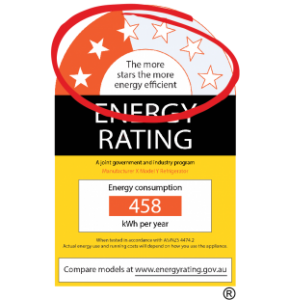
Be sure to check the total energy or water consumption figures on the label, as well as the star rating. A larger 5-star appliance might still consume more energy than a smaller 4-star appliance.
Don’t forget that even when your appliances are in stand-by mode, they can still contribute up to 10% of household electricity use, even when they’re not being used. It’s always best to simply turn the appliances off at the outlet.
Water Efficiency in Sustainable Building

Buildings use up to 12% of our water supply in Australia. With a continent as dry as ours, it’s important to reduce this amount as much as possible.
"Australia is the driest populated continent on earth. Yet Australians are the greatest consumers of water per capita in the world."
Use Less Water
An easy way to lower your water usage is to reduce your water consumption. And the first place to start is in the shower, which is responsible for 34% of water use in the average Australian home.
Install a water-efficient showerhead or an AAA-rated shower, which means it produces nine litres of water per minute.
When shopping for your showerhead, toilet, washing machine, dishwasher, and taps, look for the WELS label. The national Water Efficiency Labelling and Standards scheme rates products in Australia on their water efficiency. As with the energy ratings, the more stars an appliance has, the more water efficient they are.
Use Rainwater
Using rainwater can reduce your water bills, provide an alternative source of water when there are restrictions, and still help you sustain a luscious lawn (although a better strategy would be to grow indigenous plants adapted for the local climate).
You can even use your rainwater to flush your toilet, have a shower, or wash your clothes.
You’ll need gutters on your roof, a collection system, a tank, and a supply system (such as a pump) to collect and use rainwater.
Recycle Your Grey Water
Grey water comes from fixtures such as your showers, basins, and taps). As with rainwater, grey water is great for watering the garden, flushing the toilet, and washing the clothes.
The Best Resources for Sustainable Building
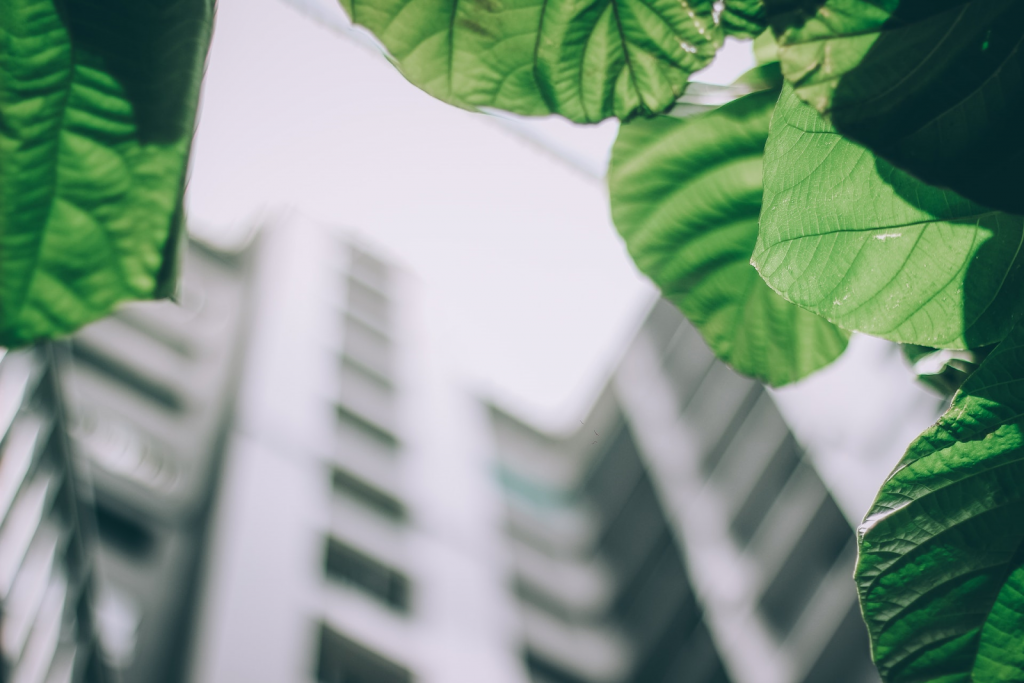
Have a taste of sustainable building and want to know more? There are some excellent resources out there providing quality info on green building. Here are just a few of our favourites:
- This article from renew. considers how our homes would look if we designed them to last a century.
- The City of Yarra provides this excellent overview of the 10 key categories of sustainable building.
- Green Cross Australia released this incredible and interactive Green Building Guide and showcases over 70 technologies to rebuild homes to more disaster-resilient standards.
- The City of Melbourne has producing this Greening Your Building Toolkit, complete with over 70 management, maintenance, and refurbishment initiatives to help improve an existing building’s environmental performance.
- The council again has provided a brilliant Sustainability Checklist and Fact Sheet for businesses involved in designing, managing, or implementing renovations or new building construction.
- The Australian Government’s Your Home website provides a wealth of resources and support materials to help you know how to green your home.
Make your home more energy efficient. Contact an electrician who will do it fairer, better, and right the first time, every time.
How to locate an electrical fault… quickly and safely
Home electrical fault finding guide – common electrical problems solved!
